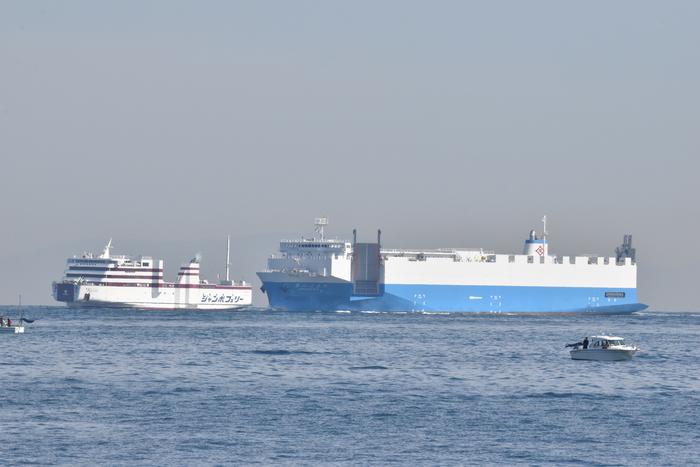More than a century ago, the sinking of the Titanic left an indelible mark on maritime history, a tragic event largely attributed to human error and navigation through perilous waters. Fast forward to today, the maritime industry stands at the precipice of a technological revolution, driven by advancements in artificial intelligence (AI) and autonomous navigation systems aimed at preventing such catastrophes. However, as ships become increasingly reliant on AI for collision avoidance, a pivotal question emerges: can these systems not only act decisively but also transparently communicate their decision-making processes to human operators?
This question fuels the research spearheaded by a team at Osaka Metropolitan University’s Graduate School of Engineering, where researchers have developed an explainable AI model specifically designed for ship collision avoidance. In congested sea lanes where numerous vessels jostle for safe passage, the ability to quantify the collision risk posed by each surrounding ship is crucial. Their innovation lies not just in calculating these risks but in elucidating the rationale behind every maneuver, bridging the gap between automated decisions and human understanding.
Unlike traditional AI systems that operate as opaque "black boxes," this new model incorporates principles of explainable AI (XAI), a rapidly growing field focused on making algorithmic decision-making more interpretable. By translating complex navigational choices into numerical values representing collision risk, the AI provides captains and maritime workers with clear insight into why it may choose to veer, slow down, or maintain course. This transparency is key to fostering trust between human operators and autonomous systems—a prerequisite for the widespread adoption of unmanned vessels in future shipping fleets.
Graduate student Hitoshi Yoshioka and Professor Hirotada Hashimoto, the lead architects behind this initiative, emphasize that their model does far more than merely predict risks. The system articulates its behavioral intentions, offering a window into the underlying computations that inform its actions. Such a feature enables ship operators to grasp not only what decisions are made but also the context and justification, effectively decoding the AI’s "thought process" at sea.
From a technical standpoint, their approach leverages computational simulations to model myriad maritime scenarios, dynamically analyzing variables such as vessel speed, heading, distance, and course changes. By integrating these parameters, the explainable AI assesses the probability of collision in real time across all nearby vessels and identifies which entities constitute the highest risks. The numerical risk values serve as both decision metrics for the autonomous system and diagnostic tools for human interpreters.
One of the notable challenges addressed by the researchers is the inherent complexity and unpredictability of maritime traffic. Unlike open waters, key straits and ports are characterized by dense vessel traffic and fluctuating environmental conditions, necessitating robust AI capable of rapid, reliable analysis. The explainability framework ensures that even as the system handles such complexity, it remains accessible and comprehensible to human navigators, thus improving safety and operational efficacy.
The implications of this research extend far beyond the technical domain. Professor Hashimoto articulates a broader vision wherein explainable AI fosters a symbiotic relationship between humans and machines in marine navigation. By providing clear explanations for its judgments and maneuvers, the AI not only enhances safety but also cultivates confidence among maritime personnel. Such trust is essential for transitioning towards autonomous or unmanned ships, which promise efficiency gains but currently face skepticism rooted in lack of transparency.
Moreover, the real-world application of this explainable AI system aligns closely with international maritime safety regulations, which increasingly emphasize risk assessment and accountability. Transparent AI decision-making could facilitate compliance audits and incident investigations, offering verifiable records of decision rationales during critical events. This traceability positions the technology as a cornerstone for the next generation of smart shipping.
The researchers’ findings are documented in a detailed article published in the journal Applied Ocean Research, where they discuss their methodologies, simulation results, and practical considerations. Their work exemplifies the convergence of engineering, artificial intelligence, and maritime science, charting a course towards smarter and safer oceans where human and artificial agents collaborate seamlessly.
In a world where shipping routes serve as vital arteries for global trade, reducing the frequency and severity of maritime collisions is a paramount goal. Explainable AI systems, such as the one developed at Osaka Metropolitan University, represent a transformative step forward. By harnessing advanced computation in a comprehensible manner, they offer a proactive tool for collision risk management—potentially saving lives, protecting cargo, and preserving the environment.
As autonomous ships are poised to enter commercial service in the near future, integrating explainability will be essential. The ability to decode AI-driven decisions ensures that captains remain in the loop, reinforcing human oversight while enabling AI to handle complex tasks. Ultimately, this model might serve as a blueprint for embedding transparency into all sectors where AI interacts with human operators under safety-critical conditions.
Taken together, this research underscores the vital importance of trust, transparency, and interpretability in AI applications. It reminds us that technological advancement is most powerful when paired with clear communication and human-centered design—a lesson with profound relevance not only for maritime navigation but for the broader landscape of autonomous systems worldwide.
Subject of Research: Not applicable
Article Title: Explainable AI for ship collision avoidance: Decoding decision-making processes and behavioral intentions
News Publication Date: 21-Feb-2025
References: Applied Ocean Research (DOI: 10.1016/j.apor.2025.104471)
Image Credits: Yoshiho Ikeda, Professor Emeritus, Osaka Prefecture University
Keywords: Explainable AI, ship collision avoidance, autonomous navigation, maritime safety, artificial intelligence, human-machine trust, computational simulation, risk quantification




